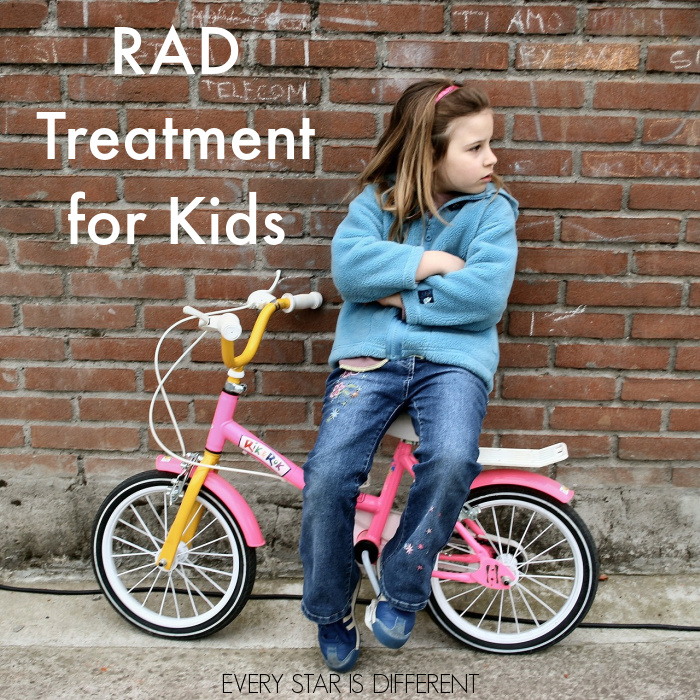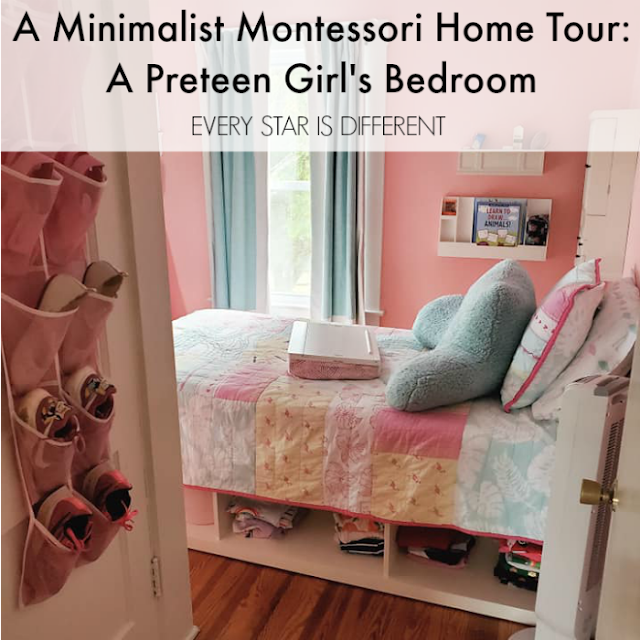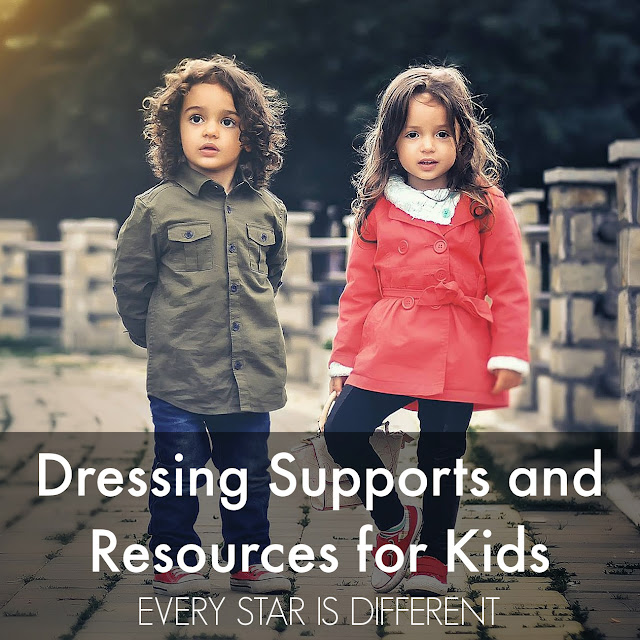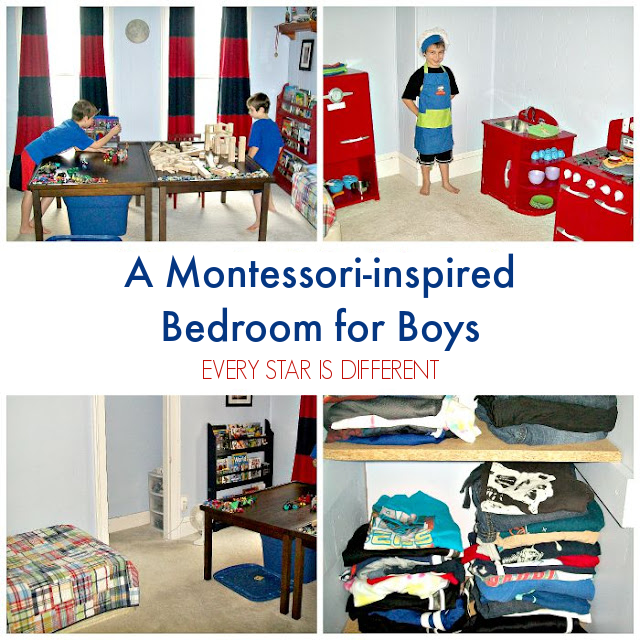Clothing is a hot topic among those who practice minimalism.
How many clothing items are too many?
How do you decide to downsize?
How do you make due with less?
How do you manage a family of six when it comes to clothing needs and minimalism?
The questions go on and on.
Today I'm sharing our family's minimalistic approach to clothing.
Minimalism looks different for everyone.
What may work for us, may not work at all for you.
One Family's Minimalistic Approach to Clothing
How Many Outfits Does Each Person in the Family Have?
At about age 8, our children learn to do their own laundry.
Each child has a designated day of the week to wash their clothes and bedding.
You can read more about our minimalist Montessori approach to washing clothes in the article below.
Our family's minimalist approach to clothing directly corresponds with each person doing their laundry one time per week.
Each family member has eight sets of casual clothing for each season, one for each day of the week, and an extra just in case.
Family members who prefer jeans or jean shorts, have four pair to match eight tops.
Those who don't wear jeans usually have eight bottoms to go with eight tops.
Everyone has ten to twelve pair of underwear and socks.
Girls and women have two bras to wear underneath every day clothing.
Each person in the family has two sweatshirts. With that said, most in the family have more than two sweatshirts. They've been gifted sweatshirts associated with local sports teams they participate in or support.
Teens in our home tend to wear hoodies on an almost daily basis during cooler seasons.
Everyone in the house has one bathing suit for beach and pool excursions.
When it comes to sleep attire, the goal is for everyone to have 8 pair of pajamas for each season. There are definitely times when we have less.
How Many Sports/Exercise Outfits Does Each Person in the Home Have?
In our family, exercise is encouraged at least five times a week, which means we strive to ensure that everyone has five work out outfits.
Some of our kids are swimmers, so some of these workout clothes are bathing suits.
Other kids have belonged to sports teams and wear uniforms.
My teen boys usually wear athletic shorts and t-shirts all summer long, so they usually only need winter exercise attire separate from their regular wardrobe, outside of organized sports and swimming.
We have not reached the point in any sports journey that requires special footwear. If we do, that will also be purchased.
How Many Dress Outfits Does Each Family Member Have?
We are a church going family.
The men in our home have one suit.
It's the goal to build up to two suits just in case one needs cleaning and for different season, but we aren't there yet.
Girls and women in the home have two to three dresses or skirt outfits for each season.
Our teens are at an age where they are attending formal events.
The teen boys in the house wear their suits with an appropriate tie.
Teen girls in the home build a collection of two to three formal dresses to wear to these events.
How Does our Family Plan for Holiday or Vacation Related Attire?
One of our family traditions is everyone receives a new pair of pajamas on Christmas Eve.
We also celebrate the Icelandic Christmas Cat. This means that everyone receives a new outfit on Christmas day.
Boys and men in the home receive a new tie and socks every Christmas and Easter season and build a collection to rotate each season.
Girls and woman receive a new dress or skirt outfit each Christmas and Easter seasons.
When it comes to purchasing wardrobes for each season, we try to make sure that these include a Star Wars shirt for Star Wars Day, something that is green for St. Patrick's Day, etc.
If we know we're going on a vacation to Walt Disney World or Universal Studios, we'll make sure that wardrobes include themed items to wear during these trips.
All holiday and vacation apparel (except Halloween costumes) is included in the eight outfits and eight pajamas per person.
How Many Pairs of Shoes Does each Person in the Household Have?
Each family member has two pair of sneakers to alternate for everyday use and casual sports.
We've found two pair are necessary, especially as we love to travel and visit theme parks.
They also keep an old pair of shoes to use for mowing the lawn, painting, and other messy activities.
All boys and men have one to two pair of dress shoes to match suits.
Girls and women have two to three pair of dress shoes of different colors to match all outfits.
Now that we only have teens and adults at home, some of us choose to have two pair of casual dressy shoes as well.
In our home, this tends to be a female thing. If we tended to minimize further, these shoes would probably be the first to go.
Each person in the family has one pair of winter boots for snowy weather.
Everyone also has one pair of rainboots.
All family members also have a pair of flip flops for pool and beach use.
What Outerwear Does Each Family Member Have?
Each family member has a 3-in-1 jacket that serves as a raincoat, light coat, and winter coat.
Everyone also has a pair of snow pants.
Our family is from upstate NY.
Even though we live in Virginia where it only snows a few times a year, our family loves to go outside and enjoy it.
How Does Our Family Shop for Clothing and Shoes?
I must confess, I hate shopping.
It completely stresses me out and feels so overwhelming.
For this reason I usually stick to the same stores.
My favorite clothing stores are Eddie Bauer, Gap and J. Crew.
My husband and kids also find these stores to be very likeable.
One of my sons loves pants from American Eagle.
All sports attire usually comes from Lids.
Bathing suits are most often from Lands End.
Underwear are purchased at Jockey.
Bras come from Third Love or Victoria Secret.
When we had little ones, we were huge fans of Children's Place, Gymboree, Hanna Andersson and Lands End.
Our family rarely ever visits a different clothing store, which helps so much to minimize overwhelm when shopping.
Vacation attire usually comes from Disney and Universal Studios as these brands usually last the longest. We've had poor luck with ordering online through Amazon and other companies.
I choose all of the stores mentioned above because the clothes last and keep so well. They are also very sensory friendly.
My husband and I wear clothing that is a decade old and many pieces still look fabulous.
Everyone in the house would prefer to have a few nice outfits, rather than a larger wardrobe of items that don't last very long.
But, please know, just because we prefer expensive stores, doesn't mean that I am willing to pay a lot for clothing.
Everyone in the family knows that unless clothing items are 50% OFF or more, we don't buy it.
We make a trip to outlet malls once or twice a year, to ensure that we can get great prices.
I clearance shop, watch for sales in my e-mail, and use rewards and coupons year round to keep clothing expenses low.
I happen to love clearance sales because there is less to choose from. They really help my minimalistic brain. Lol.
Thrift stores are very overwhelming to me as require customers to search through every item on the rack, so I usually avoid them.
The one exception to all of these rules is purchasing clothes for my youngest daughter who resides in a residential facility.
She goes through a wardrobe every six months.
Clothes are either destroyed, lost, or stolen.
Her wardrobe comes from Walmart now that she's in women sizes, as it's the cheapest way to go, while matching sensory needs.
When I see an outfit she will like, I pick it up and build wardrobes one year in advance.
Another strategy I use while shopping is that I never purchase a clothing item, unless I already have something to go with it, or I can find an entire outfit.
My kids and husband also do this while shopping.
I have found this minimizes what we buy so much!
Ever since the kids were able to make their own decisions about their clothes, I have followed their lead so long as they follow the 50% OFF or more rule and put together matching outfits.
How Does our Family Store Clothing?
There are no closets in our old farmhouse.
Rooms are VERY small.
Other than suits and formal wear, which hang on a hanger on a hook in each bedroom, all other clothes are stored on shelves or in dressers.
All clothing purchased needs to be able to be folded.
Our kids have storage beds.
Fall and winter clothes are stored on one side. Spring and summer clothes are stored on the other side.
Sweatshirts hang on hooks.
Shoes are stored in a wall organizer.
My husband and I each have one dresser to store clothing.
We follow the
Marie Kondo method of folding to maximize room.
As our youngest as grown older, but still needs extra supports, we've come up with fun and creative ways to help her.
Part of this extra support has been in the way of clothing storage.
You can read about these other clothing storage ideas in the article below.
Once everyone in the family has their eight outfits, the proper sportswear, footwear, and outerwear, no other items are purchased unless they are destroyed beyond repair, or a child outgrows them.
If I see items on clearance sales online for the next year that I know are necessary, I will pick them up.
Otherwise, our family does not shop for clothing or shoes AT ALL.
We don't even visit clothing stores.
Our family chooses to minimize clothing to one week's worth only.
We choose to minimize through clothing storage, which cuts down on so much clothing care time.
If we know we can't hang clothing up, we don't choose items that need extra care.
All items, besides suits and formal wear, can go through the washing machine.
Every family may choose to practice minimalism differently.
This is just one family's minimalistic approach to clothing.
If you enjoyed this post, you may like the resources below.









































